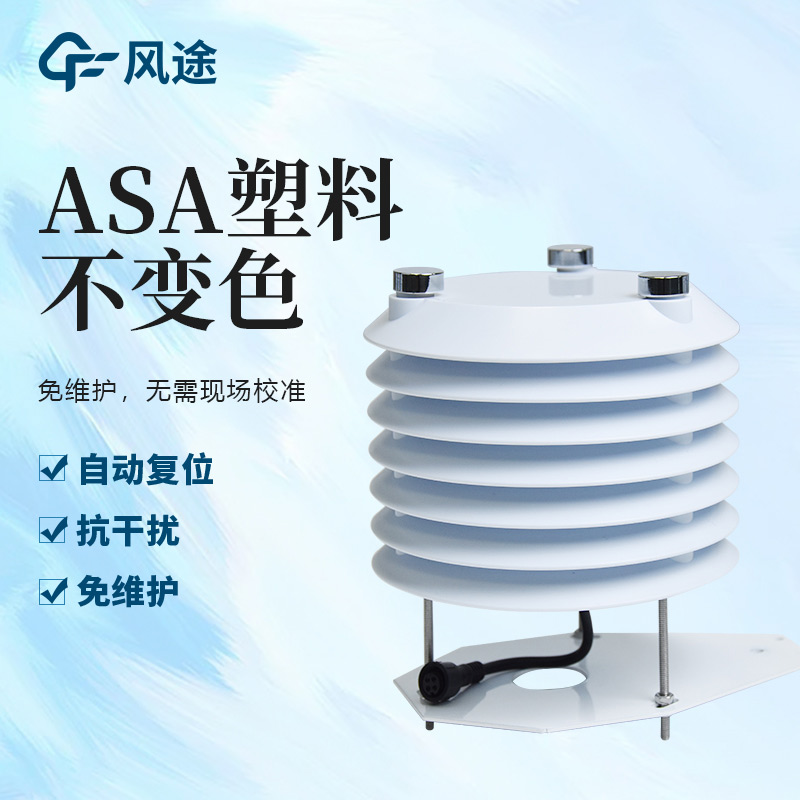Tianqiong Sensor IOT Technology Co., Ltd
Sales Manager:Ms. Emily Wang
Cel,Whatsapp,Wechat:+86 15898932201
Email:info@fengtutec.com
Add:No. 155 Optoelectronic Industry Accelerator, Gaoxin District, Weifang, Shandong, China

Sales Manager:Ms. Emily Wang
Cel,Whatsapp,Wechat:+86 15898932201
Email:info@fengtutec.com
Add:No. 155 Optoelectronic Industry Accelerator, Gaoxin District, Weifang, Shandong, China
time:2025-07-28 08:53:25 source:Weather Station viewed:220 time
As the name suggests, an air quality sensor monitors carbon monoxide (CO), sulfur dioxide (SO₂), nitrogen dioxide (NO₂), and ozone (O₃). CO mainly comes from incomplete combustion of fuels, such as automobile exhaust and industrial waste gas emissions. SO₂ is mostly produced by the combustion of sulfur-containing fuels, with industrial activities like thermal power generation and metal smelting being its main sources. NO₂ mainly comes from high-temperature combustion processes, and it is easily generated when automobile engines and industrial boilers are in operation. Ozone is formed by photochemical reactions between nitrogen oxides and volatile organic compounds under sunlight. These are the "four gases," all of which are substances that pollute air quality.
The "two types of particulate matter" refer to PM2.5 and PM10, which are tiny particulate matter suspended in the air. PM2.5 has a small particle size, can stay suspended for a long time, and is rich in a large number of toxic and harmful substances, having a huge impact on human health and atmospheric environmental quality. PM10 can also pose a threat to the human respiratory system and so on.
The air quality sensor has a high degree of integration, integrating the monitoring functions of these six key pollutants into a compact structure. This not only saves space but also facilitates installation and maintenance on vertical air micro-stations.
For data output, it offers a variety of interface options. The RS485 communication interface follows the MODBUS protocol, enabling stable long-distance data transmission and being widely used in industrial fields. It also provides 232, USB, and Ethernet interfaces. The 232 interface is suitable for short-distance device connections; the USB interface allows for quick connection with devices such as computers, facilitating debugging and data reading; the Ethernet interface can easily access the network, realizing high-speed and stable remote data transmission.
Real-time data reading allows relevant personnel to grasp the air quality status at the first time. Once there is an abnormality in air quality, response measures can be taken quickly. For example, in the event of a sudden pollution, nearby residents can be promptly notified to take protective measures, or relevant departments can quickly investigate pollution sources.
The sensor can be optionally equipped with a wireless transmission module, with a minimum transmission interval of 1 minute. This means that the latest monitoring data can be transmitted to the receiving end every minute, which can present the dynamic changes of air quality in near real-time, providing strong support for timely analysis and scientific decision-making.
In short, with accurate monitoring of the "four gases and two types of particulate matter," high integration, rich data output interfaces, real-time data reading, and efficient wireless transmission, the air quality sensor has become an ideal choice for vertical air micro-stations.

As night fell, I was flying through the darkness as usual. Suddenly, I spotted a beam of light that lured insects ahead. Driven by instinct, my companions and I flew towards the light source without hesitation. Later I came to know that it was actually a nightmare from which there was no escape. Tha...
Wheat seedling conditions are usually classified into strong seedlings, robust seedlings (including first - class and second - class seedlings), and weak seedlings (third - class seedlings). For different seedling conditions, differential management measures need to be taken during key growth stages...
When traditional mechanical weather stations monitor wind speed and direction, they encounter a difficult problem. The wind speed sensor usually consists of wind cups and an axis, and the wind direction sensor relies on mechanical components such as a wind vane. When these mechanical components are...
Due to the special nature of their production processes, chemical plants have strict requirements for meteorological condition monitoring. This need stems from two core backgrounds: first, from a safety perspective, many chemical materials are extremely sensitive to wind speed, wind direction, and o...